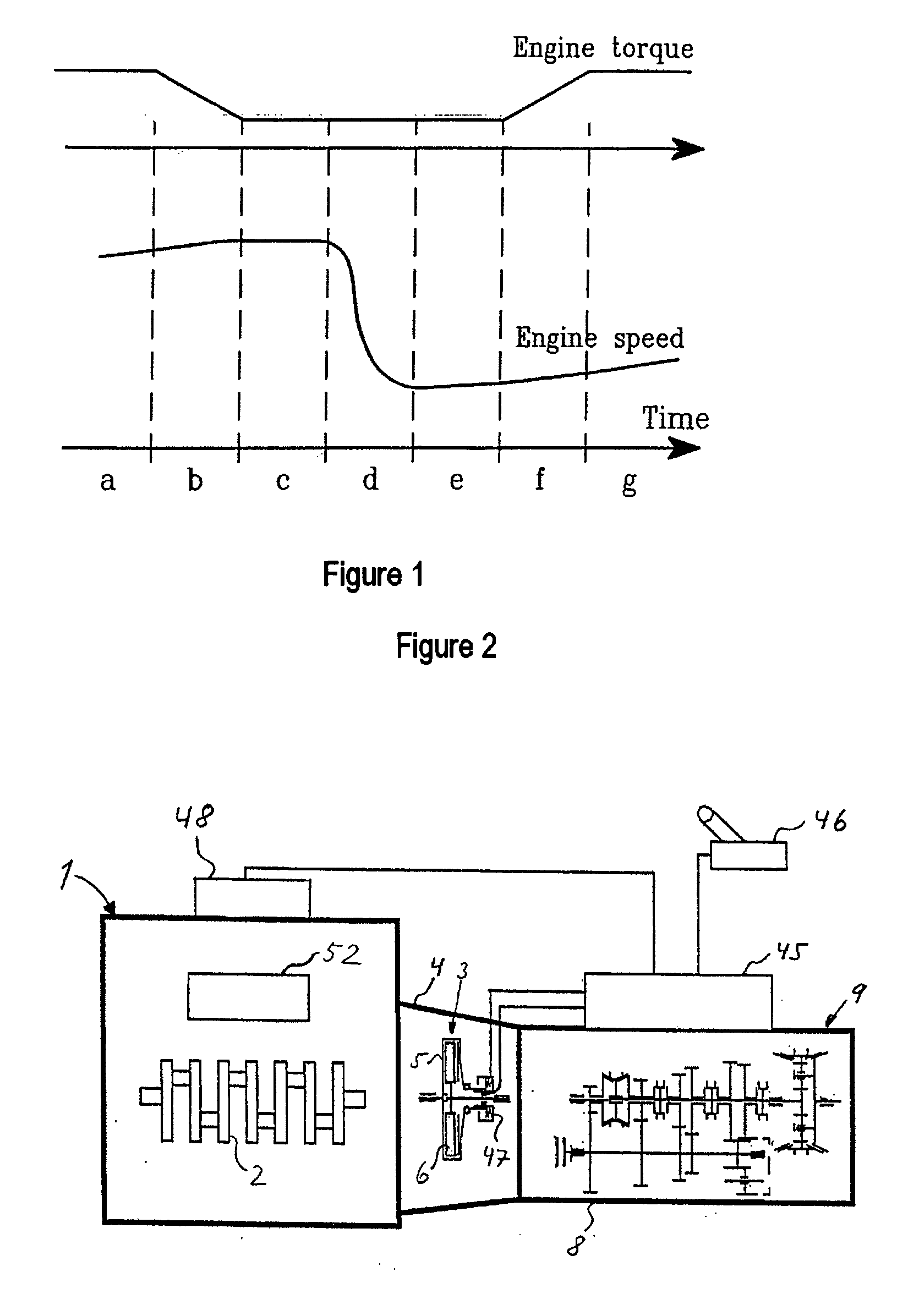Procedure for upshifting gear in a motor vehicle and a power plant unit for a motor vehicle
- Summary
- Abstract
- Description
- Claims
- Application Information
AI Technical Summary
Benefits of technology
Problems solved by technology
Method used
Image
Examples
Embodiment Construction
[0031] In FIG. 2, reference number 1 designates a six-cylinder internal combustion engine, for example a diesel engine, the crankshaft 2 of which is coupled to a single-plate dry disk clutch, designated generally by reference number 3, and which is enclosed in a clutch case 4. A two-plate version can be used instead of a single-plate disk clutch. The crankshaft 2 is, via the output shaft 51 of the engine (see FIG. 3), connected non-rotatably to the clutch housing 5 of the clutch 3, while a plate 6 thereof is non-rotatably connected to an input shaft 7 mounted rotatably in the casing 8 of a gearbox designated generally by reference number 9. A main shaft 10 and an intermediate shaft 11 are also rotatably mounted in the casing 8. Also illustrated are an engine control unit 48, a transmission control unit 45 and a manual gear selector 46 coupled to the transmission control unit 45. The transmission control unit 45 and the engine control unit 48 are adapted for communication with one an...
PUM
 Login to View More
Login to View More Abstract
Description
Claims
Application Information
 Login to View More
Login to View More - R&D
- Intellectual Property
- Life Sciences
- Materials
- Tech Scout
- Unparalleled Data Quality
- Higher Quality Content
- 60% Fewer Hallucinations
Browse by: Latest US Patents, China's latest patents, Technical Efficacy Thesaurus, Application Domain, Technology Topic, Popular Technical Reports.
© 2025 PatSnap. All rights reserved.Legal|Privacy policy|Modern Slavery Act Transparency Statement|Sitemap|About US| Contact US: help@patsnap.com



